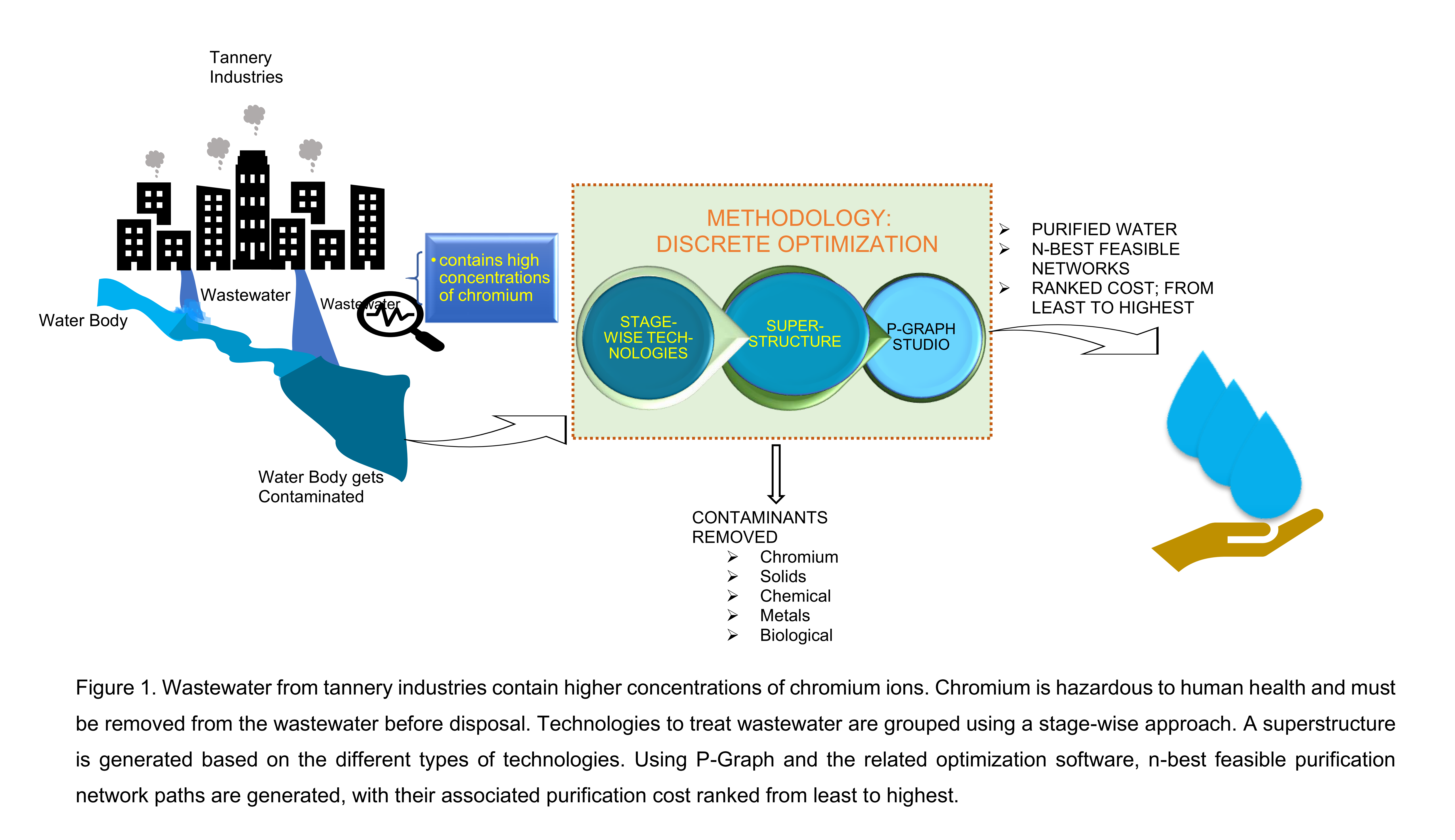(702c) Systematic Design of Wastewater Treatment Networks Using the P-Graph Approach: A Tannery Waste Case Study
AIChE Annual Meeting
2020
2020 Virtual AIChE Annual Meeting
Environmental Division
Advanced Treatment for Water: Reuse and Recycling I
Friday, November 20, 2020 - 8:30am to 8:45am
After use, the water gets contaminated with pollutants and therefore, becomes unsafe for drinking and other purposes. About 80% of wastewater is released into the environment without adequate treatment. By treating wastewater, this growing demand can be satisfied effectively. Wastewater is mostly treated in three main stages namely, primary stage, secondary stage, and tertiary stage. Sometimes pretreatment is necessary to remove large solid particles or cause charged suspended solid particles to settle. There are also various technologies that can be categorized into the different stages of the treatment process due to their efficiencies and driving forces for contaminant removal. The challenge then is which technology to select at each stage of the treatment to meet purity standards, as well as minimize purification cost. With the application of discrete optimization, the challenge to meet purity requirements with minimum purification cost can be solved (Yenkie, 2019; Yenkie et al., 2019).
One of the biggest sources of wastewater is the tannery industry. Most tannery wastewater contains higher dissolved organic carbons and total suspended solids (Inc et al., 2002). Further, chromium ions are predominantly found in these wastewater streams in higher concentrations. Since chromium possesses a higher health risk to humans, there is the need to treat these wastewater streams to reduce these chromium ions to within the accepted concentration levels before being reused for the particular purpose or discharge safely for natural remediation. Thus, our approach is demonstrated via a representative case study of tannery wastewater.
In this work, a stagewise wastewater treatment approach is implemented. Modular design based on superstructure generation which comprises all the possible treatment technologies, flows, connections, bypasses, and mixers is applied (Yenkie et al., 2019). The P-graph approach, which is optimization-based, has been used extensively to evaluate problems of combinatorial nature, such as supply chain, evacuation routes design, and process network synthesis (PNS)(Friedler et al., 1998, 1992, p.; Vance et al., 2013). The advantage of using P-graph studio is that not only are the best feasible structures in terms of cost obtained, but also a ranked list of all feasible near-optimal solutions is generated. With this information, consideration of additional performance criteria such as operability, flexibility, and sustainability can be considered before a holistic decision is taken. Therefore, the P-graph approach was used to solve the representative case study. The selection of technologies at each stage of the treatment process was formulated as a mixed integer programming (MIP) problem. The problem was then solved using the advanced branch-and-bound (ABB) which is an MIP solver in P-graph studio.
References
Friedler, F., Fan, L.T., Imreh, B., 1998. Process network synthesis: Problem definition. Networks 31, 119–124.
Friedler, F., Tarján, K., Huang, Y.W., Fan, L.T., 1992. Graph-theoretic approach to process synthesis: axioms and theorems. Chem. Eng. Sci. 47, 1973–1988. https://doi.org/10.1016/0009-2509(92)80315-4
Inc, M.& E., Tchobanoglous, G., Burton, F.L., Stensel, H.D., 2002. Wastewater Engineering: Treatment and Reuse, 4th edition. ed. McGraw Hill Higher Education, Boston.
Vance, L., Cabezas, H., Heckl, I., Bertok, B., Friedler, F., 2013. Synthesis of Sustainable Energy Supply Chain by the P-graph Framework. Ind. Eng. Chem. Res. 52, 266–274. https://doi.org/10.1021/ie3013264
Yenkie, K., 2019. 1 Integrating the three E’s in wastewater treatment: 2 efï¬cient design, economic viability, and 3 environmental sustainability. Curr. Opin. Chem. Eng. 9.
Yenkie, K.M., Burnham, S., Dailey, J., Cabezas, H., Friedler, F., 2019. Generating Efficient Wastewater Treatment Networks: an integrated approach comprising of contaminant properties, technology suitability, plant design, and process optimization, in: Computer Aided Chemical Engineering. Elsevier, pp. 1603–1608. https://doi.org/10.1016/B978-0-12-818634-3.50268-X
